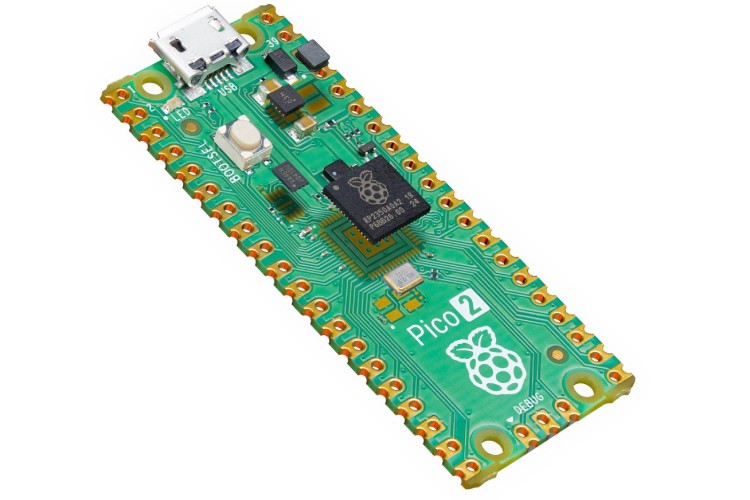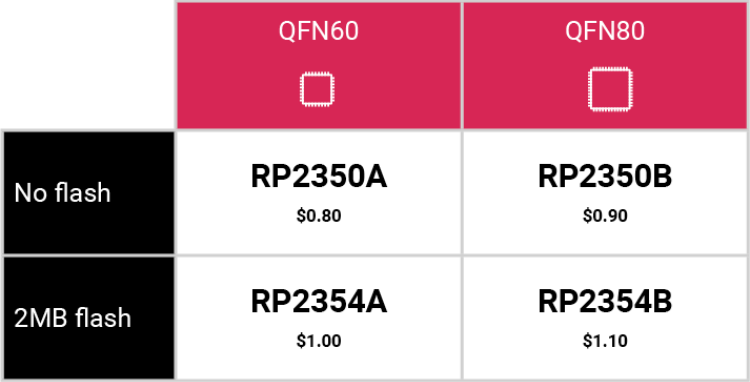
The Raspberry Pi Foundation has announced the release of the Raspberry Pi Pico 2, priced at $5, designed for both performance and compatibility with its predecessor, the Raspberry Pi Pico. This second-generation development board is built around Raspberry Pi’s own in-house developed microcontroller, the RP2350. The RP2350 is a high-performance microcontroller featuring dual-core architecture with the option of 150MHz Arm Cortex-M33 or RISC-V Hazard3 cores. The RP2350 chip also brings enhanced security features such as Arm TrustZone for Cortex-M, signed boot support, and a hardware true random number generator (TRNG). Similarly, the RP2350 feature an on-chip SRAM of 520kB and a one time programmable memory space of 8KB. Along with that the board also comes with 4MB flash memory just like its predecessor.

The Raspberry Pi Pico 2 introduces several key enhancements over the original Pico. The RP2350 microcontroller features dual-architecture support, allowing developers to choose between Arm Cortex-M33 and RISC-V Hazard3 cores based on their project needs. This flexibility makes the Pico 2 a versatile choice for a wide range of applications. On top of that the new RP2350 also feature three PIO blocks, providing up to 12 PIO state machines. Unlike the RP2040 the RP2350 comes in two packages: a 7x7mm QFN60 package featuring 30 GPIOs (RP2350A) and a 10x10mm QFN80 package featuring 48GPIOs(RP2350B). Additionally, the chip is also available in two other flavours with an onboard 2MB flash memory in both QFN60(RP2354A) and QFN80 packages (RP2354B). The Raspberry Pi Pico 2 is fully backwards compatible with the Raspberry Pi Pico in terms of physical dimensions as well as the hardware pinout.

The release of the Pico 2 is accompanied by updated software development kits (SDKs) for C/C++, MicroPython, and CircuitPython. Furthermore, the Raspberry Pi Foundation has collaborated with the Trusted Firmware project to establish the RP2350 as a reference platform for secure firmware development, and with Google to launch the Pigweed SDK with native support for the Pico 2. One more thing to point out is that the Pico 2 lacks any kind of wireless communication just like the Pico, indicating there might be a Pico 2 W is going to be released soon. As an added bonus to the launch Raspberry now offers a $10,000 bounty for the first confirmed break of RP2350’s signed boot process. You can find more information and development resources on the Pico 2 official webpage.

